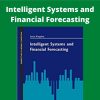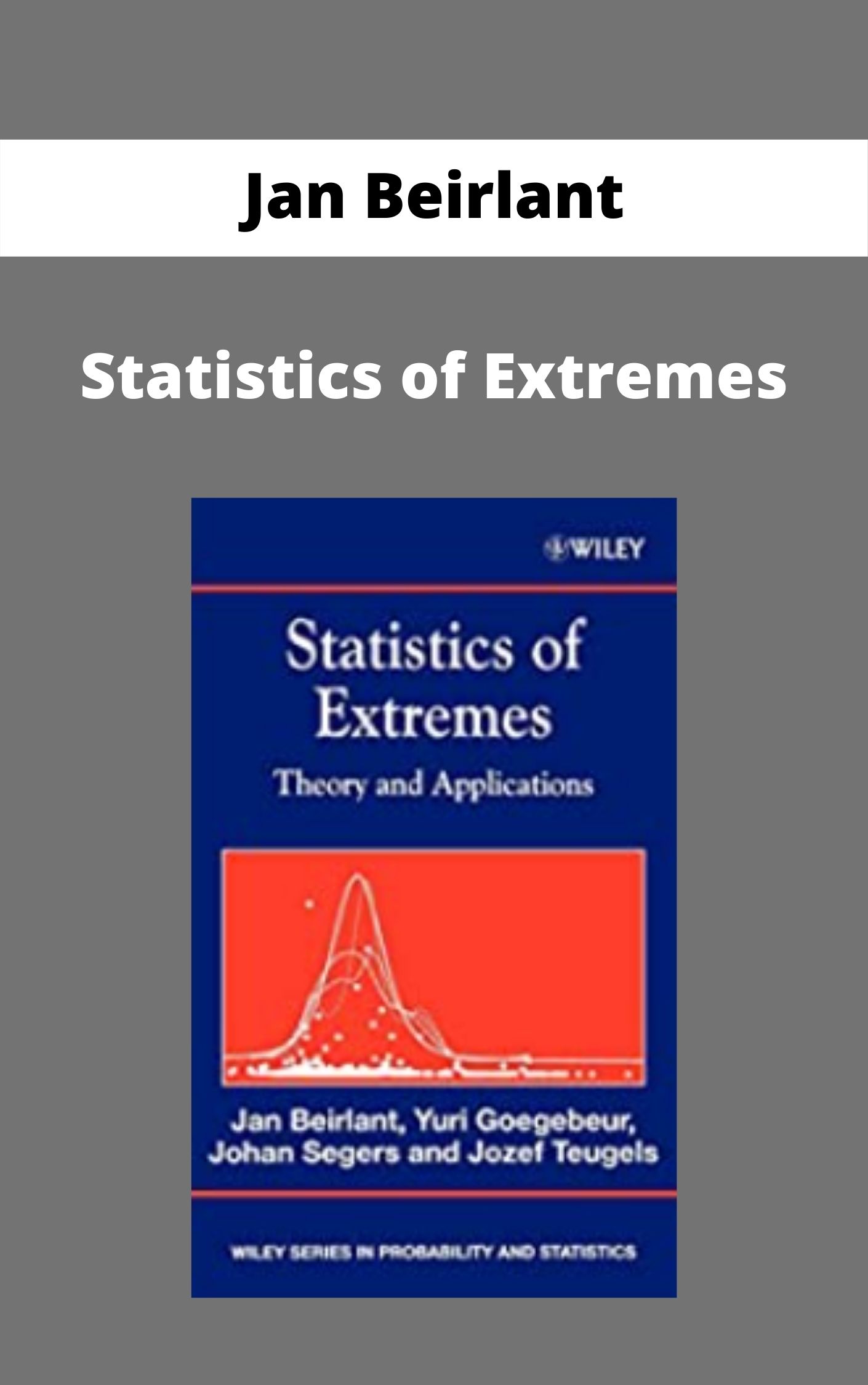Jan Beirlant – Statistics of Extremes –
$22.00
Jan Beirlant – Statistics of Extremes – Available Now !!!
Sale Page:
Value:
You just pay: 22
Status: This item is available
Description:
Research in the statistical analysis of extreme values has flourished over the past decade: new probability models, inference and data analysis techniques have been introduced; and new application areas have been explored.Statistics of Extremes comprehensively covers a wide range of models and application areas, including risk and insurance: a major area of interest and relevance to extreme value theory. Case studies are introduced providing a good balance of theory and application of each model discussed, incorporating many illustrated examples and plots of data. The last part of the book covers some interesting advanced topics, including time series, regression, multivariate and Bayesian modelling of extremes, the use of which has huge potential.
Preface.
1 WHY EXTREME VALUE THEORY?
1.1 A Simple Extreme Value Problem.
1.2 Graphical Tools for Data Analysis.
1.3 Domains of Applications.
1.4 Conclusion.
2 THE PROBABILISTIC SIDE OF EXTREME VALUE THEORY.
2.1 The Possible Limits.
2.2 An Example.
2.3 The Fr´echet-Pareto Case: γ > 0.
2.4 The (Extremal) Weibull Case: γ < 0.
2.5 The Gumbel Case: γ = 0.
2.6 Alternative Conditions for (Cγ ).
2.7 Further on the Historical Approach.
2.8 Summary.
2.9 Background Information.
3 AWAY FROM THE MAXIMUM.
3.1 Introduction.
3.2 Order Statistics Close to the Maximum.
3.3 Second-order Theory.
3.4 Mathematical Derivations.
4 TAIL ESTIMATION UNDER PARETO-TYPE MODELS.
4.1 A Naive Approach.
4.2 The Hill Estimator.
4.3 Other Regression Estimators.
4.4 A Representation for Log-spacings and Asymptotic Results.
4.5 Reducing the Bias.
4.6 Extreme Quantiles and Small Exceedance Probabilities.
4.7 Adaptive Selection of the Tail Sample Fraction.
5 TAIL ESTIMATION FOR ALL DOMAINS OF ATTRACTION.
5.1 The Method of Block Maxima.
5.2 Quantile View—Methods Based on (Cγ).
5.3 Tail Probability View—Peaks-Over-Threshold Method.
5.4 Estimators Based on an Exponential Regression Model.
5.5 Extreme Tail Probability, Large Quantile and Endpoint Estimation Using Threshold Methods.
5.6 Asymptotic Results Under (Cγ )–(C*γ ).
5.7 Reducing the Bias.
5.8 Adaptive Selection of the Tail Sample Fraction.
5.9 Appendices.
6 CASE STUDIES.
6.1 The Condroz Data.
6.2 The Secura Belgian Re Data.
6.3 Earthquake Data.
7 REGRESSION ANALYSIS.
7.1 Introduction.
7.2 The Method of Block Maxima.
7.3 The Quantile View—Methods Based on Exponential Regression Models.
7.4 The Tail Probability View—Peaks Over Threshold (POT) Method.
7.5 Non-parametric Estimation.
7.6 Case Study.
8 MULTIVARIATE EXTREME VALUE THEORY.
8.1 Introduction.
8.2 Multivariate Extreme Value Distributions.
8.3 The Domain of Attraction.
8.4 Additional Topics.
8.5 Summary.
8.6 Appendix.
9 STATISTICS OF MULTIVARIATE EXTREMES.
9.1 Introduction.
9.2 Parametric Models.
9.3 Component-wise Maxima.
9.4 Excesses over a Threshold.
9.5 Asymptotic Independence.
9.6 Additional Topics.
9.7 Summary.
10 EXTREMES OF STATIONARY TIME SERIES.
10.1 Introduction.
10.2 The Sample Maximum.
10.3 Point-Process Models.
10.4 Markov-Chain Models.
10.5 Multivariate Stationary Processes.
10.6 Additional Topics.
11 BAYESIAN METHODOLOGY IN EXTREME VALUE STATISTICS.
11.1 Introduction.
11.2 The Bayes Approach.
11.3 Prior Elicitation.
11.4 Bayesian Computation.
11.5 Univariate Inference.
11.6 An Environmental Application.
Bibliography.
Author Index.
Subject Index.
Reviews
“This excellent book provides an overall survey of the most important achievements in the field of extreme value theory.” (Mathematical Reviews, 2005j)
“…a useful reference for researchers wishing to learn more about the analysis of extreme data, including as it does a wealth of information about the topic…” (Technometrics, August 2005)
“The book is well written and the authors make good use of graphical procedures to illustrate and illuminate their exposition.” (International Statistical Institute, Vol 25 (2), August 2005)
“…a very useful and readable text…” (Journal of the Royal Statistical Society, Vol 169 (1), January 2006)
“…its strengths lie in the combination of the theory and applications.” (Meteorologishe Zeitschrift, April 2007)
Please kindly contact us if you need proof of item.
Find out more Forex & Trading Courses >>> At Here.
1 review for Jan Beirlant – Statistics of Extremes –
| 5 star | 100 | 100% |
| 4 star | 0% | |
| 3 star | 0% | |
| 2 star | 0% | |
| 1 star | 0% |
Sorry, no reviews match your current selections
Q & A
Related products
Forex & Trading
Forex & Trading
Forex & Trading
Forex & Trading
Forex & Trading
Forex & Trading
Forex & Trading
Forex & Trading












Everything‘s good | Jan Beirlant – Statistics of Extremes –